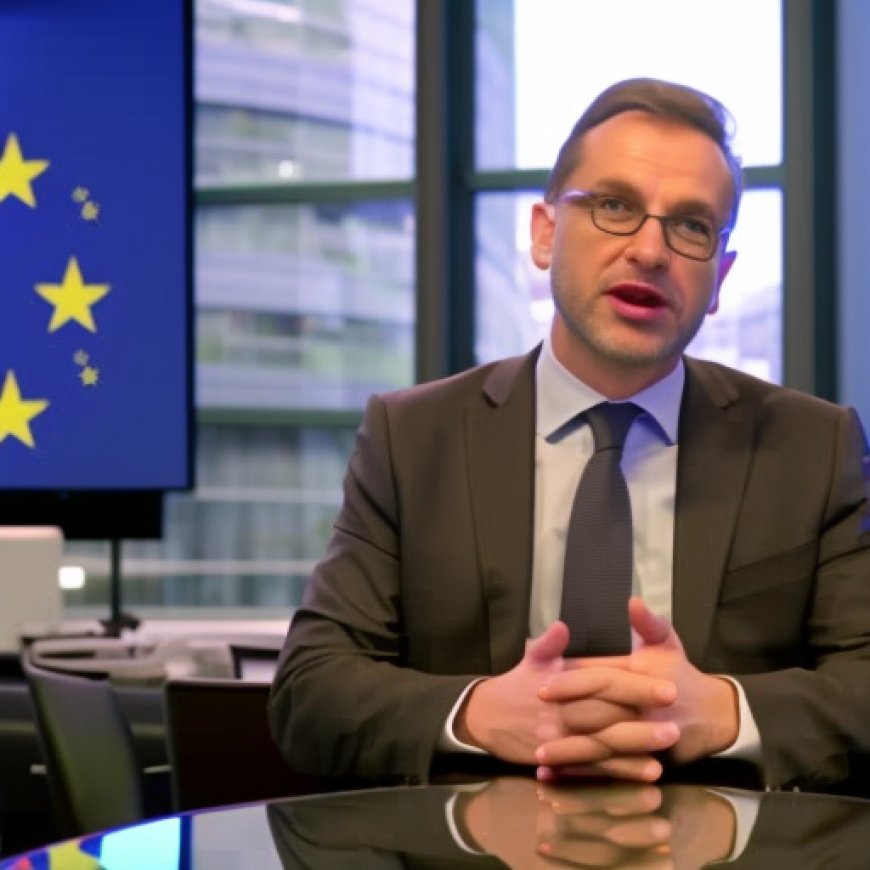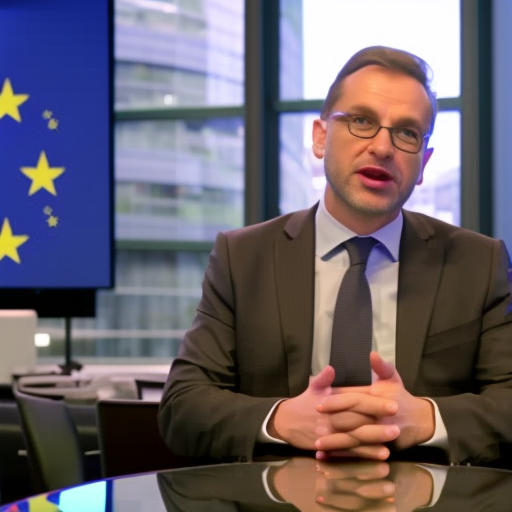Global Gateway: EU announces new EU Circular Economy Resource Centre and SWITCH to Circular Economy in East and Southern Africa programme to accelerate global transition
Global Gateway: EU announces new EU Circular Economy Resource Centre and SWITCH to Circular Economy in East ... European Union


European Commissioner for International Partnerships Announces Initiatives to Advance Circular Economy

During the World Circular Economy Forum 2024, European Commissioner for International Partnerships Jutta Urpilainen announced two initiatives aimed at advancing circular economy globally.
EU Circular Economy Resource Centre
The EU Circular Economy Resource Centre, established under the Global Gateway strategy, will facilitate peer-to-peer exchanges and partnerships between EU and third-country stakeholders. It aims to foster the uptake of sound circular economy policies and business models worldwide. The European Commission has committed €15 million to this initiative.
SWITCH to Circular Economy in East and Southern Africa Programme
Commissioner Urpilainen also launched the “SWITCH to Circular Economy in East and Southern Africa” programme, which will receive €40 million in funding over five years from the European Commission. This programme will promote the transition to circular economies in East and Southern Africa, with a focus on capacity building, policy support, and improved access to finance. It will specifically target the packaging and plastic waste, as well as the electronics and e-waste value chains.
Commissioner Urpilainen stated, “No one can predict the future, but that does not stop us from impacting it. It is possible to make circularity the next megatrend. The vision behind the Circular Economy Resource Centre is to share policy and business know-how and best practices with partner countries. This is also in line with the ambitions of the SWITCH to Circular Economy in East and Southern Africa programme, a great initiative increasing circularity in key value chains, and I am glad we can now deploy it in these regions in Africa. It is part of our positive offer Global Gateway, and consistent with our enhanced engagement with African partners.”
About the EU Circular Economy Resource Centre
The EU Circular Economy Resource Centre embodies the EU’s commitment to advancing circularity on a global scale and facilitating the transition towards sustainable, climate-neutral societies. The four-year action will mobilise EU Circular Economy know-how, policies and standards, technologies, business models, and practices to promote learning and exchanges with partners in the Neighbourhood, Asia, Africa, and Latin America. It intends to set up:
- A Circular Economy Knowledge Lab: This lab will document and consolidate EU circular economy know-how from partner country lenses. It will make this knowledge available to partner country stakeholders through a knowledge platform and helpdesk, dialogue and exchange of experiences, good practices, learnings, and innovative approaches.
- A Circular Economy Policy Lab: This lab will offer assistance on policy and regulatory matters through technical assistance, exchange of best practices, and acceleration programmes to inspire policy and regulatory development.
- A Circular Economy Business Lab: This lab will support partner country businesses in transitioning to circular economies. It will facilitate peer-to-peer exchanges, provide circular economy market outlooks and benchmarking assessments. It will also showcase innovative circular solutions and facilitate matchmaking with EU companies, with special attention to women and youth entrepreneurs.
The European Commission has collaborated with partners including the Finnish Ministry for Foreign Affairs, the Finnish Innovation Fund Sitra, and the Belgian Development Agency ENABEL in designing this initiative. Implementation is set to begin before the end of 2024.
About the SWITCH to Circular Economy in East and Southern Africa Programme
The SWITCH to Circular Economy in East and Southern Africa (SWITCH-2-CE in ESA) programme aims to reinforce support for an inclusive transition to circular economies in East and Southern Africa. The programme will contribute to the mitigation of climate change by promoting green and circular business models in packaging and plastic waste, as well as electronics and e-waste value chains.
Following a South-South Twinning approach, the SWITCH-2-CE in ESA programme will entail:
- Policy, regulatory, and business enabling environment
- Capacity building and human development
- Access to finance through a matching grant facility (MGF) for young start-ups and SMEs. The MGF is also accessible to invest in joint ventures between African and European companies.
The European Commission is launching this programme in collaboration with the Common Market for Eastern and Southern Africa (COMESA) organisation.
Background
The EU Circular Economy Resource Centre, financed under the EU’s Neighbourhood, Development and International Cooperation Instrument (NDICI) – Global Europe Programme, will promote learning and exchanges with partner countries to accelerate the global transition to the Circular Economy.
The Global Europe Instrument for the period 2021-2027, which integrated the Green Deal as one of the key EU policy priorities, has helped scale up support for circular economy initiatives. The EU has committed approximately €1.6 billion (2021-2023) to over 75 actions that contribute to supporting the circular economy transition at country, regional, and global levels. In 2023 alone, over 100 partner countries have benefited from EU support to promote a circular transition of their economies.
These initiatives align with the objectives of the Circular Economy Action Plan (CEAP) and the European Green Deal, which aim to reduce consumption footprints and double Europe’s circular material use rate within the next decade.
SDGs, Targets, and Indicators
1. Which SDGs are addressed or connected to the issues highlighted in the article?
- SDG 12: Responsible Consumption and Production
- SDG 13: Climate Action
- SDG 17: Partnerships for the Goals
2. What specific targets under those SDGs can be identified based on the article’s content?
- SDG 12.2: By 2030, achieve the sustainable management and efficient use of natural resources.
- SDG 12.5: By 2030, substantially reduce waste generation through prevention, reduction, recycling, and reuse.
- SDG 13.2: Integrate climate change measures into national policies, strategies, and planning.
- SDG 17.16: Enhance the global partnership for sustainable development, complemented by multi-stakeholder partnerships that mobilize and share knowledge, expertise, technology, and financial resources.
3. Are there any indicators mentioned or implied in the article that can be used to measure progress towards the identified targets?
- Indicator for SDG 12.2: Material footprint and material footprint per capita
- Indicator for SDG 12.5: Waste generation per capita
- Indicator for SDG 13.2: Integration of climate change measures into national policies and strategies
- Indicator for SDG 17.16: Number of multi-stakeholder partnerships promoting sustainable development
4. Table: SDGs, Targets, and Indicators
| SDGs | Targets | Indicators |
|---|---|---|
| SDG 12: Responsible Consumption and Production | 12.2: By 2030, achieve the sustainable management and efficient use of natural resources. | Material footprint and material footprint per capita |
| SDG 12: Responsible Consumption and Production | 12.5: By 2030, substantially reduce waste generation through prevention, reduction, recycling, and reuse. | Waste generation per capita |
| SDG 13: Climate Action | Integration of climate change measures into national policies and strategies | |
| SDG 17: Partnerships for the Goals | 17.16: Enhance the global partnership for sustainable development, complemented by multi-stakeholder partnerships that mobilize and share knowledge, expertise, technology, and financial resources. | Number of multi-stakeholder partnerships promoting sustainable development |
Explanation:
– The article discusses initiatives related to circular economy, which align with SDG 12: Responsible Consumption and Production. The targets under this SDG that can be identified are SDG 12.2 (sustainable management and efficient use of natural resources) and SDG 12.5 (reducing waste generation).
– The article also mentions the integration of climate change measures into policies and strategies, which relates to SDG 13: Climate Action.
– The establishment of partnerships and collaborations mentioned in the article aligns with SDG 17: Partnerships for the Goals. The specific target identified is SDG 17.16, which focuses on enhancing global partnerships for sustainable development.
– The indicators mentioned in the article that can be used to measure progress towards these targets are material footprint and material footprint per capita for SDG 12.2, waste generation per capita for SDG 12.5, integration of climate change measures into policies and strategies for SDG 13.2, and the number of multi-stakeholder partnerships promoting sustainable development for SDG 17.16.
Behold! This splendid article springs forth from the wellspring of knowledge, shaped by a wondrous proprietary AI technology that delved into a vast ocean of data, illuminating the path towards the Sustainable Development Goals. Remember that all rights are reserved by SDG Investors LLC, empowering us to champion progress together.
Source: international-partnerships.ec.europa.eu

Join us, as fellow seekers of change, on a transformative journey at https://sdgtalks.ai/welcome, where you can become a member and actively contribute to shaping a brighter future.







